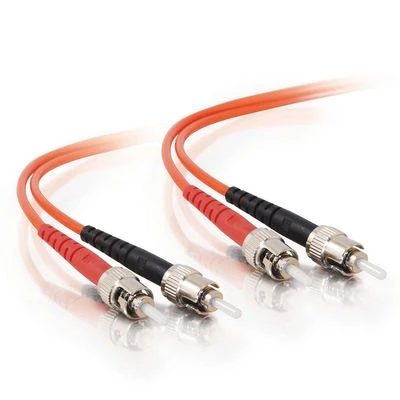You have to handle a fiber optic cable with the utmost care. It is very sensitive. Impact forces such as excessive crushing, twisting, bending, and pulling can affect its performance. Therefore, you must be aware of the appropriate way to store and handle these cables.
Moving Drum Correctly
A drum of optic fiber cable is very heavy. Therefore, you need to be careful while transporting or moving it. The most common way to transport fiber is cable drum movement. You cannot lift a cable drum/reel manually. Lift it with a reel mover or forklift and move upright. Don’t drop it from a height to unload. Use an elevator/tail-lift to unload. If you are using a forklift to move or handle the reel/drum, operate properly to avoid any kind of damage. There should be no direct contact between the cable jacket and the fork. Some drums are so big and heavy that they require a crane to unload and move. Lifting chains may compress drum flanges. You can avoid this by using a spreader bar.
Where to store fiber optic cable
Never store cable reels or cable boxes outside. Don’t expose it to a harsh environment. A dry container or room is an ideal place. It should be a UV protected location. There should be no risk of:
- Falling objects
- Excessive humidity
- Chemical spills
- Excessive heat
- Open flames
You can store your reels outside but you have to consider changes in the weather. This can change its appearance and also cause some other damages. Therefore, storing inside is a good idea.
Storage Requirements
The following are the four main requirements for storing fiber optic cable. Keep in mind that these requirements affect the performance of your cablers.
- Store with seals
- Keep the drum stressed
- Don’t remove protective end-caps
- Consider minimum bending radius
Store With Seals
The cable comes with a reel seal/tag. This tag contains important information such as bandwidth, length and attenuation. Therefore, don’t remove seals/tags.
Keep the Drum Stressed
Always keep the drum/reel on both flanges on a firm surface. It should not be set on one flange. This can cause damage to the cables while unwinding.
Don’t remove protective end-caps
End-caps are used to protect the ends of the cable from moisture. Fiber assemblies are very sensitive and therefore require protection. If you remove these end-caps, this can expose the cable’s core to contaminants. This can lead to fiber pitting and scratching.
Don’t Remove Protective End-caps
When you rewind the cable to another reel, make sure that the new reel’s diameter is more than the cable’s minimum bending radius. Make sure that the reel contains a copy of the original cable label.
After-Storage Maintenance and Inspection
Maintenance and storage are very important after storing fiber optic cable. Inspection allows you to find damage in the stored reel/drum. First of all, inspect end-caps. If end-caps are damaged or missing, apply a heat shrink cap.
Fiber Optic Cable Storage Safety Requirements
You have to pay attention to many aspects to store cables safely. The following are the important requirements:
- There should be no foods or beverages in the storage area. Wear disposable aprons. Fiber particles should not be ingested as it can lead to internal hemorrhaging.
- Wear a suitable safety helmet, glasses with side shields, protective gloves and safety belts. Avoid touching eyes.
- Avoid looking through the fiber cable’s end.
- It should be a well-ventilated area.
- Don’t smoke in the storage area or while working with cables.
- Wash your hands.
- Isopropyl alcohol is flammable. Avoid using it as a cleaner.
Fiber optic cable is expensive and sensitive. Handle it with care.








